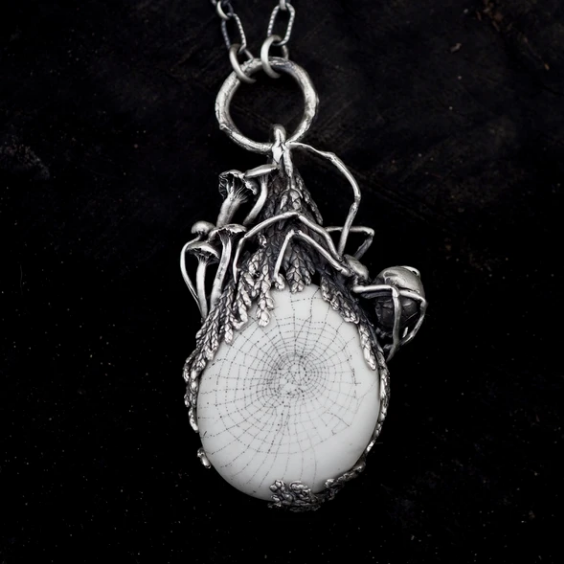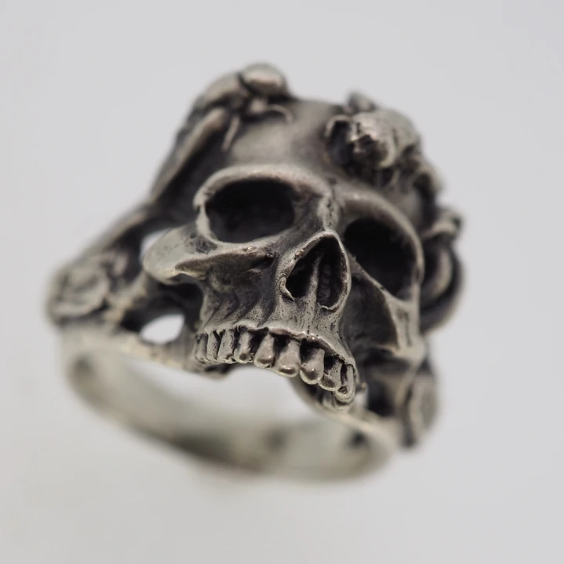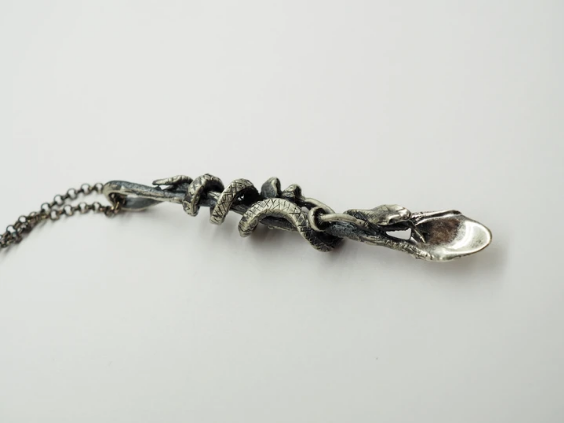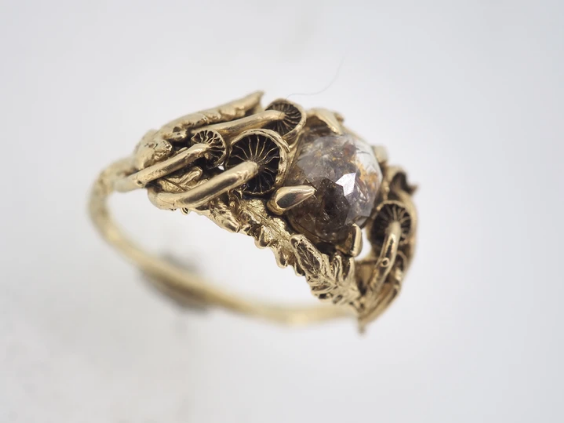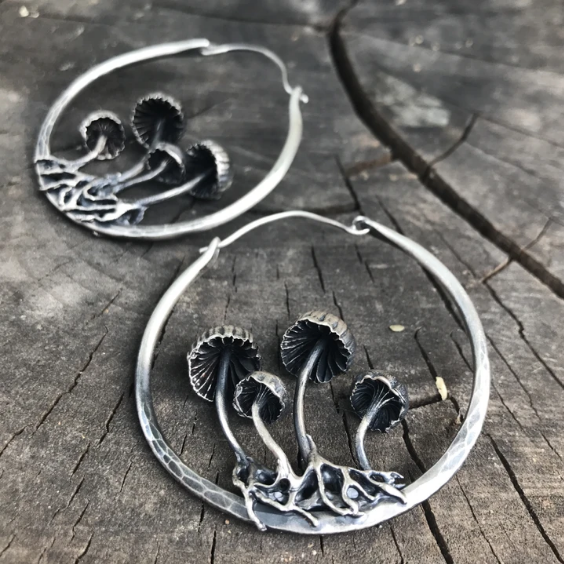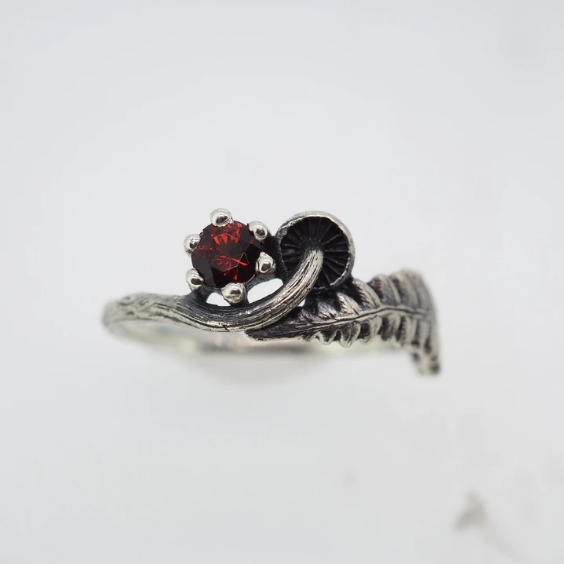b
Theeth Jewelry
Mushrooms entwined with crystals and small animals are the signature of Theeth Jewelry, hand-crafted by Portland artist Kimi Kaplowitz. These unusually beautiful and intricately delicate pieces are brilliant in design and marvelously executed. Macabre, lovable, unique, with the little imperfections born of the process that make them more astonishingly memorable, they are cast from original specimens and tiny things, spiders, cicadas, serpents, mantises, ferns, and the omnipresent mushrooms with their fragile striated gills. The resulting dear objects are odd, captivating, and spectacularly special.
![]()
